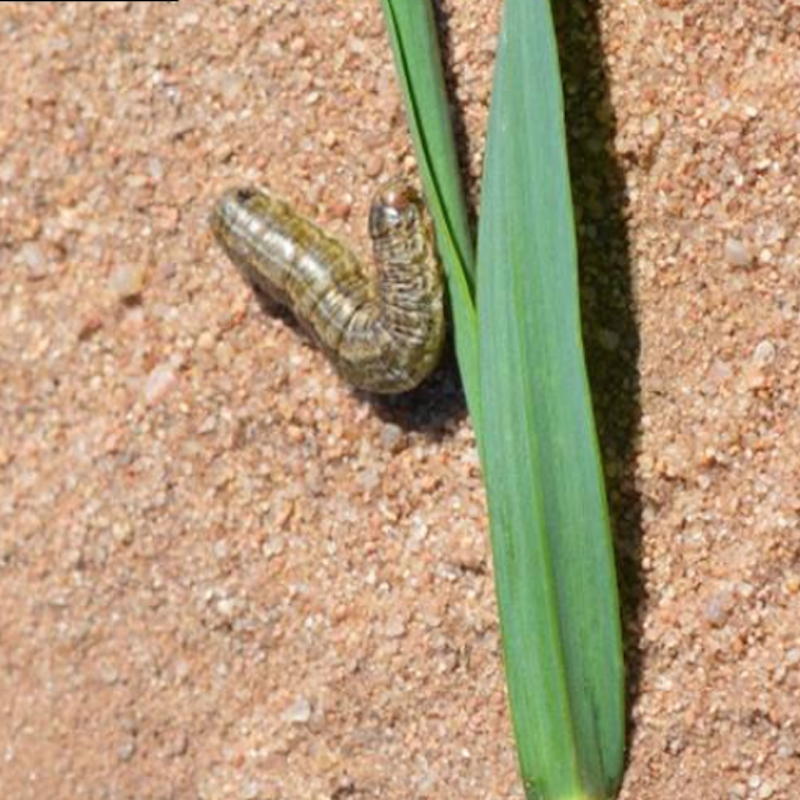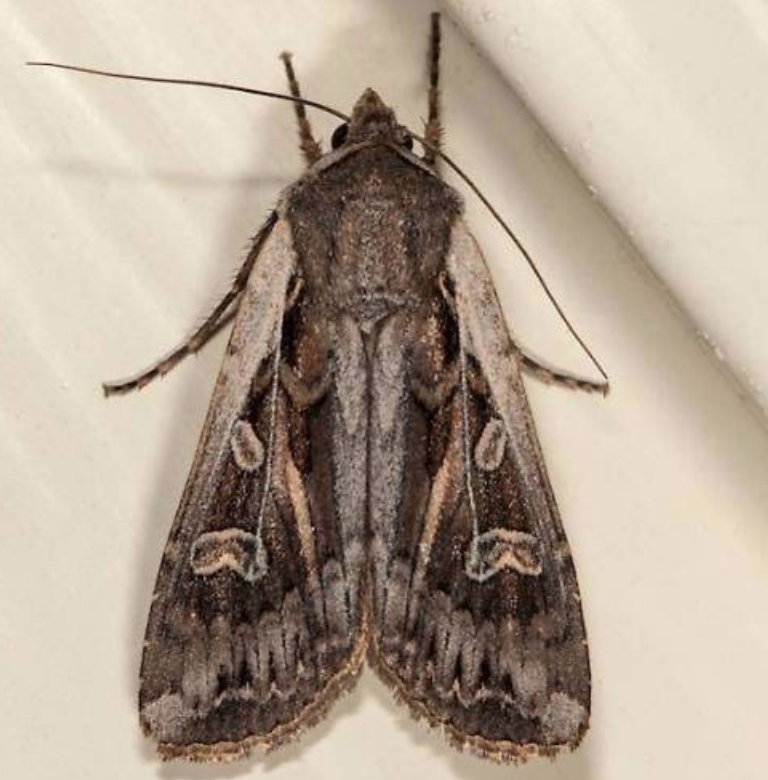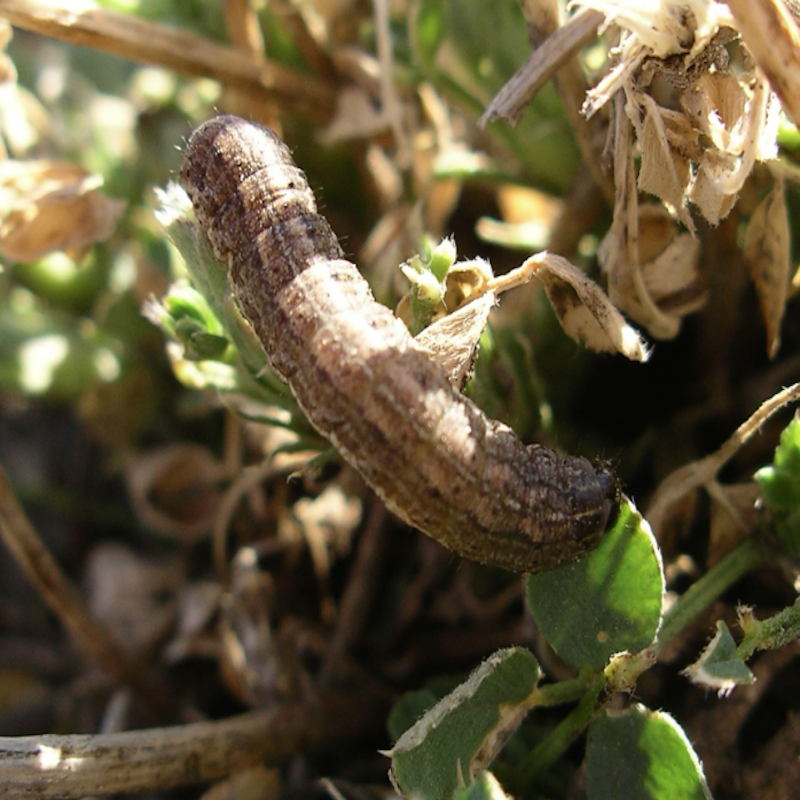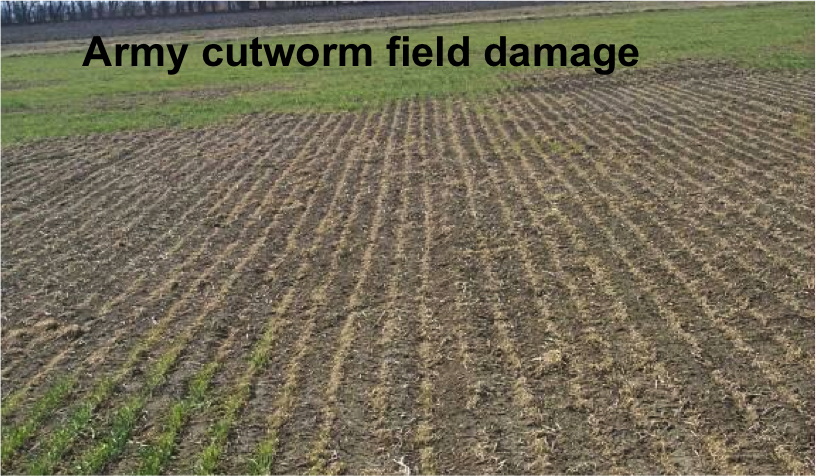
Army cutworm feeding on wheat will result in small to large holes in leaves, and severing at the crown.


Army cutworms produce a single generation per year. In Kansas, sexually immature army cutworm moths migrate westward to the Rocky Mountains, typically beginning in early May and continuing until the first days of summer. Moths feed and become sexually mature by summer’s end and initiate their fall migration eastward to the High Plains beginning in mid-September. Female moths (each capable of producing between 1,000 and 3,000 eggs) deposit eggs on the soil surface or beneath dirt clods, typically in areas next to suitable host plants. The eggs hatch shortly thereafter, and the larvae begin feeding. They are able to tolerate cold, feeding intermittently on warm winter days and staying below ground on cold ones. With the return of warmer late winter/early spring temperatures, larvae feed continuously.
After completing their feeding cycle, they burrow into the soil to pupate. Upon emergence, the sexually immature moths initiate their westward migration. Identification Army cutworm moths vary in coloration and wing pattern. Male and female moths can be differentiated based on overall shading – females are predominately grey, and males tend to be brownish. Larvae also vary in color. Small larvae are light-colored with few distinguishable markings. As they grow, larvae become darker brown or grayish with varying degrees of mottling and several pale, dorsal stripes. The head capsule is darker brown with some mottling. Larvae typically curl up when disturbed. Pupation occurs in an earthen cell underground.

